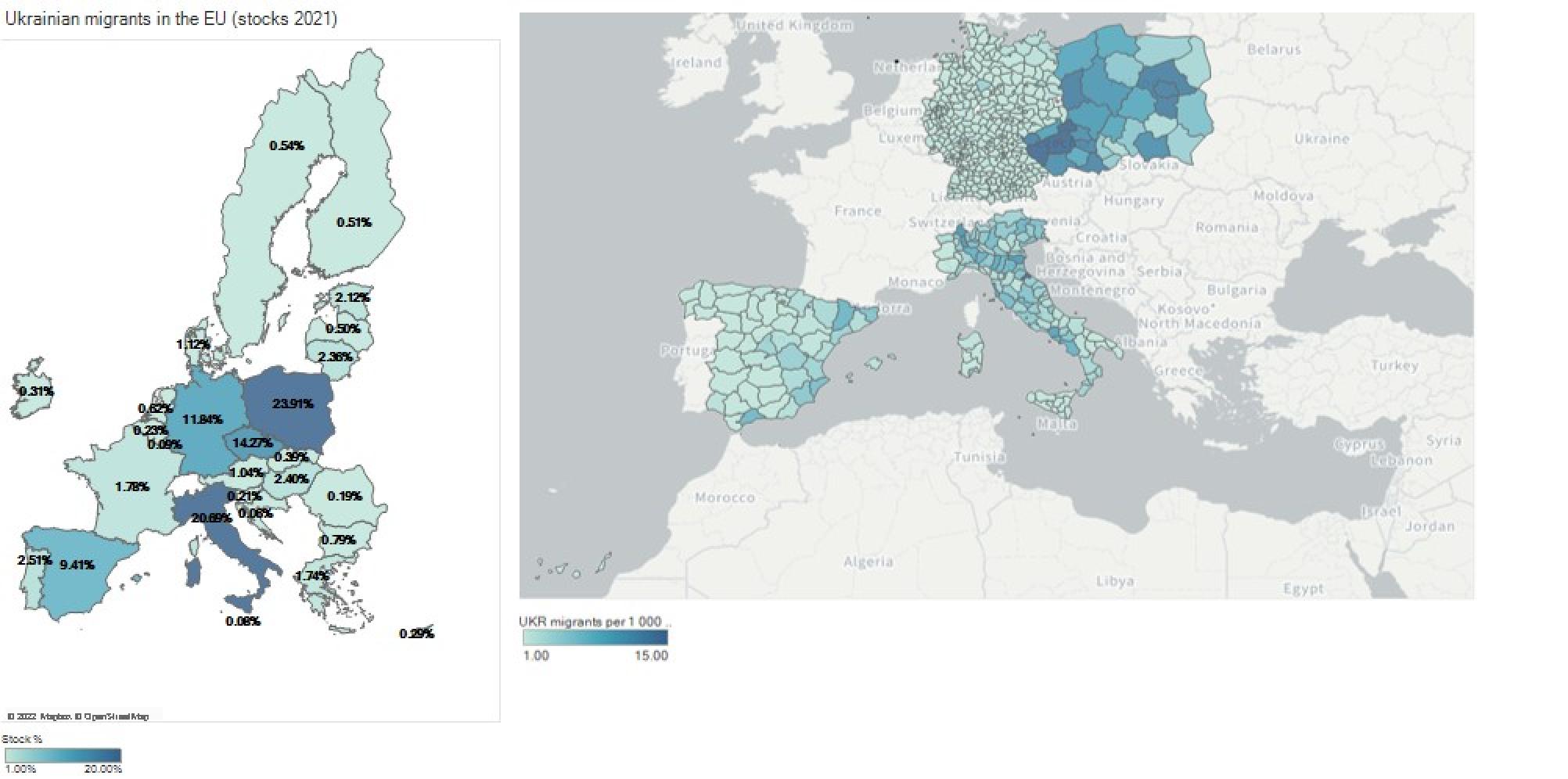A new thematic story in the Atlas of Demography shows the regional distribution of the Ukrainian diaspora in the EU. The mapping can function as an indication of where the displaced persons from Ukraine are likely to seek refuge.
As the Russian aggression against Ukraine continues, the number of people fleeing the country increases.
In the first five weeks, more than four million people crossed borders into the neighbouring countries. Over six million people are thought to be displaced internally in Ukraine.
The vast majority of those crossing the Ukrainian border arrived in Poland, followed by Slovakia, Hungary, Romania and Moldova. Some are moving to other parts of Europe.
Under the EU’s Temporary Protection Directive, they can get a special temporary protection status, which enables them to obtain a residence permit, work, attend school and receive medical care in EU countries for at least one year.
The role of the diaspora
Ukrainians with pre-existing contacts, family or friends already present in the EU will find it easier to navigate the bureaucracy of a new country, find accommodation, employment and education opportunities.
There is a clear correlation between the size of the existing Ukrainian diaspora in a given country and the number of new Ukrainian immigrants in that same country each year.
In other words, the EU countries and regions that already host the highest numbers of Ukrainians also welcome the highest numbers of new Ukrainian immigrants each year.
This is why in the context of the current displacement crisis, the presence of large Ukrainian communities within a Member State can be a good indication of where the Ukrainian refugees are likely to seek refuge.
Ukrainian diaspora in the EU
Since several years, Ukrainians are one of biggest groups of third country nationals within the EU. The number of Ukrainian immigrants increased sharply after the illegal annexation of Crimea by the Russian Federation in 2014.
In 2019, the number of Ukrainian immigrants was more than four times higher than in 2014.
The number of asylum applications by Ukrainians also increased, especially in Poland, Germany, France, Italy, Spain, France, Belgium, Finland and Austria.
More than 33 000 asylum applications were lodged by Ukrainians after 2014 in the 27 EU Member States (over 20 000 in 2015 alone).
In 2020, over 1 300 000 Ukrainians were legally residing in the 27 EU Member States. Over the last decade, Poland and Italy have issued the highest number of residence permits to Ukrainians.
Five Member States - Poland, Italy, Czechia, Germany and Spain - together host over 80% of the Ukrainian citizens living in the EU.
The new thematic story in the Atlas of Demography provides a regional distribution of the Ukrainian diaspora within these five Member States.
In Europe, the region of Prague hosts the largest diaspora of Ukrainians in both absolute term and in respect to the total population.

| Originally Published | Last Updated | 12 Apr 2022 | 19 Apr 2022 |
| Related project & activities | Atlas of Demography (AoD) |
| Related organisation(s) | JRC - Joint Research CentreKCMD - Knowledge Centre on Migration and Demography |
| Knowledge service | Metadata | Migration and Demography | Demography | Diaspora |
| Digital Europa Thesaurus (DET) | refugee |
| Geographic coverage | UkraineEuropean Union |
Share this page

